Backlinks are links from other websites pointing to your site. If you want to rank in Google’s search results, you’ll undoubtedly need backlinks.
And lots of them.
But how do you find backlinks and analyze them as a beginner?
Don’t worry—we have you covered.
This guide has everything you need to know about finding and assessing backlinks.
Before we dive into the specific backlink-finding tactics, let’s first cover the basics
What Is a Backlink Analysis?
A backlink analysis is the process of measuring the quantity and quality of links pointing to your website and/or your competitors’ websites.
It involves using backlink checker tools to see:
- Who is linking to the website
- The quality of the linking domains
- The anchor text (the clickable text that indicates a link) used for the backlinks
- Whether links are “follow” (meaning they can pass ranking strength) or nofollow (meaning they don’t pass ranking strength)
Think of a backlink analysis as a digital detective task. That involves digging into backlinks to uncover clues about your site’s link profile.
Why Are Backlink Analyses Important for SEO?
Backlink analyses are crucial for SEO because they help you build an impressive backlink profile that can help you rank high in Google’s organic (meaning unpaid) search results.
By analyzing links that direct to your own site (and competitors’ sites), you uncover new backlink opportunities. You can replicate what works and focus on getting more high-quality links.
For example, if you see a large number of your backlinks point to case studies you’ve created, that likely means case studies are a valuable and link-worthy type of content in your niche.
You can leverage this insight to create more case studies.
Essentially, a backlink analysis provides the intelligence you need to build tons of valuable backlinks.
That’s why every serious SEO should be analyzing backlinks on a consistent basis—t’s one of the most powerful things you can do to increase organic search traffic.
How to Find Backlinks Pointing to Any Website
There are several techniques you can use to find backlinks to a site.
Below, we’ll explore two of the most effective ones.
Use a Backlink Analytics Tool
Semrush’s Backlink Analytics tool is one of the most powerful backlink checker tools.
Within seconds, you can find your own backlinks. And those of your competitors.
Open the tool, enter any domain name, and click “Analyze.”
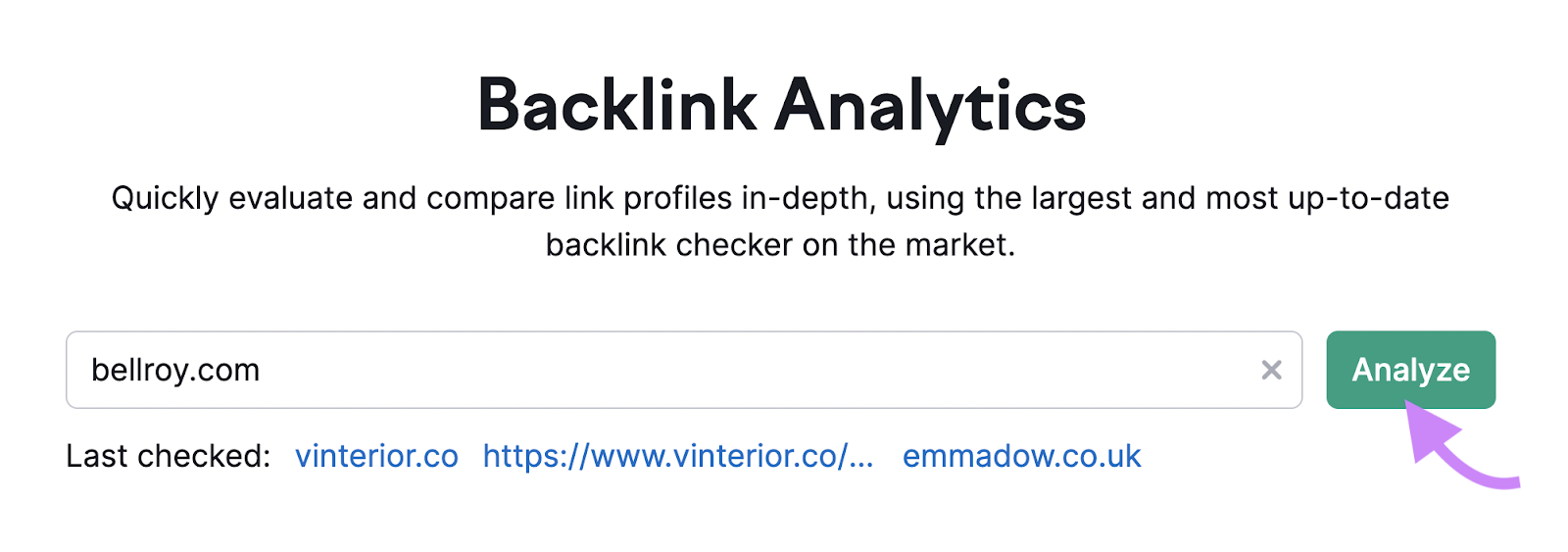
You’ll first see a high-level overview of that domain’s link profile. For a detailed look at the individual backlinks, go to the “Backlinks” tab.
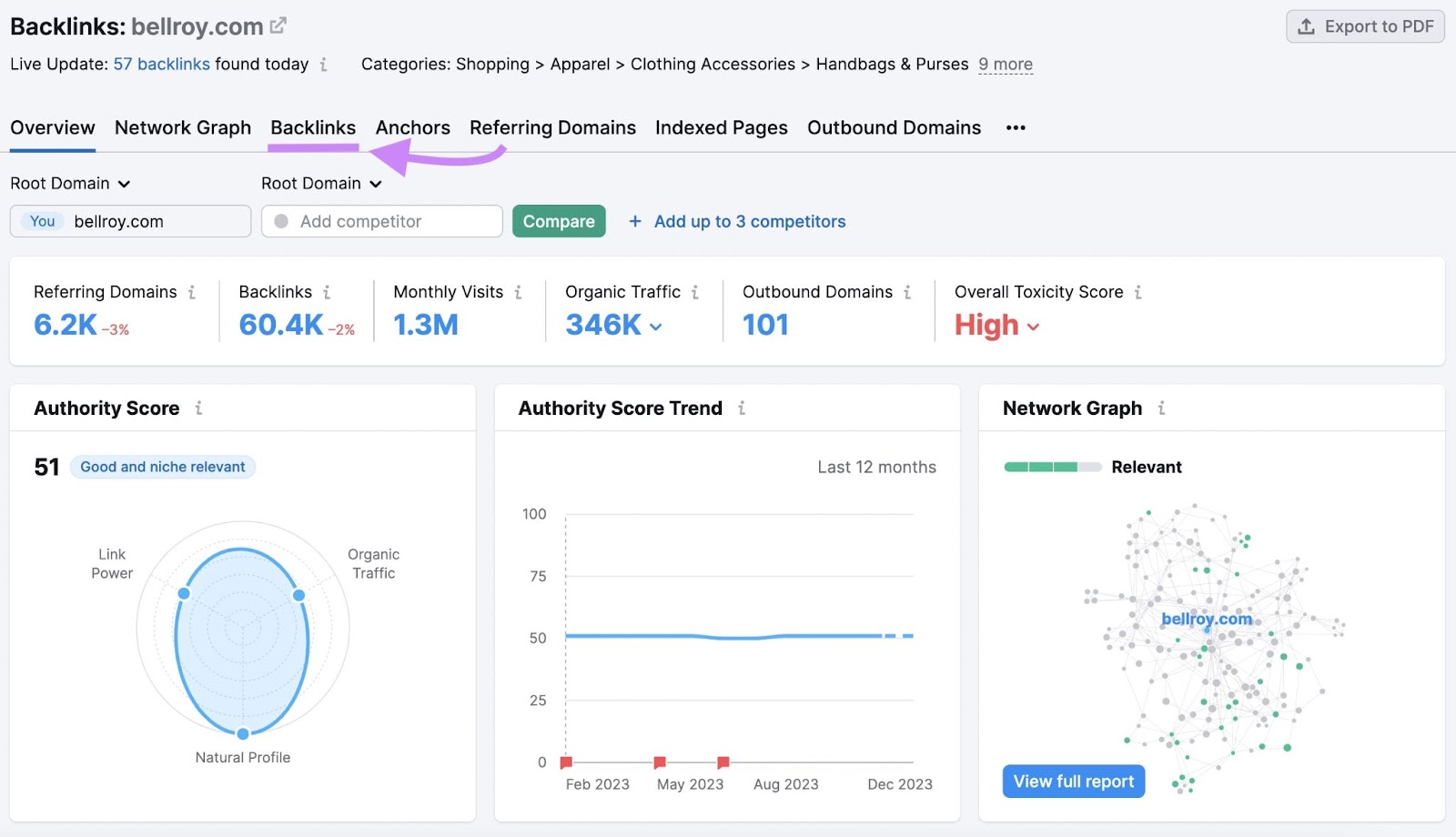
There, you can see the specific backlinks, their Authority Scores (a measure of the overall quality on a scale from 0 to 100), and the anchor text that was used for those links. Among other things.
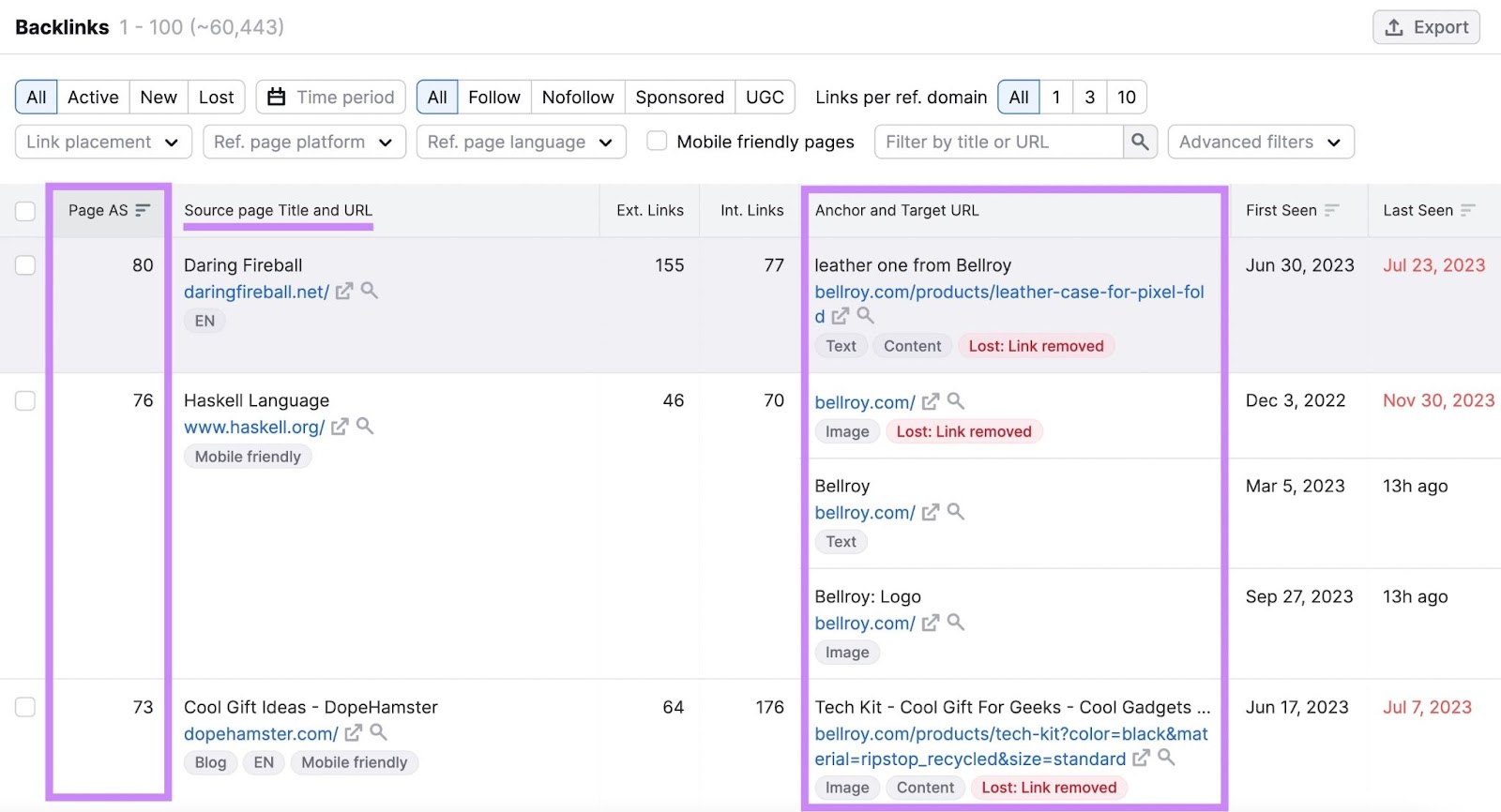
You can use this report to evaluate the relevance and quality of links pointing to a site.
Not all links are equal. Some are better than others.
For example, if you’re in a health and fitness niche, having links from authoritative and relevant sites like WebMD, Healthline, or Men’s Health would be more valuable than having links from random or unrelated sites.
This is because Google considers the quality and relevance of the linking domains when evaluating your backlinks.
The more relevant and high-quality links you have, the more heavily they’ll consider your website when ranking.
You can also filter and sort these links by various criteria, such as Authority Score, the current status of the link (active, new, and lost), the time period when the links were acquired, and the link type (“follow,” nofollow, etc.).
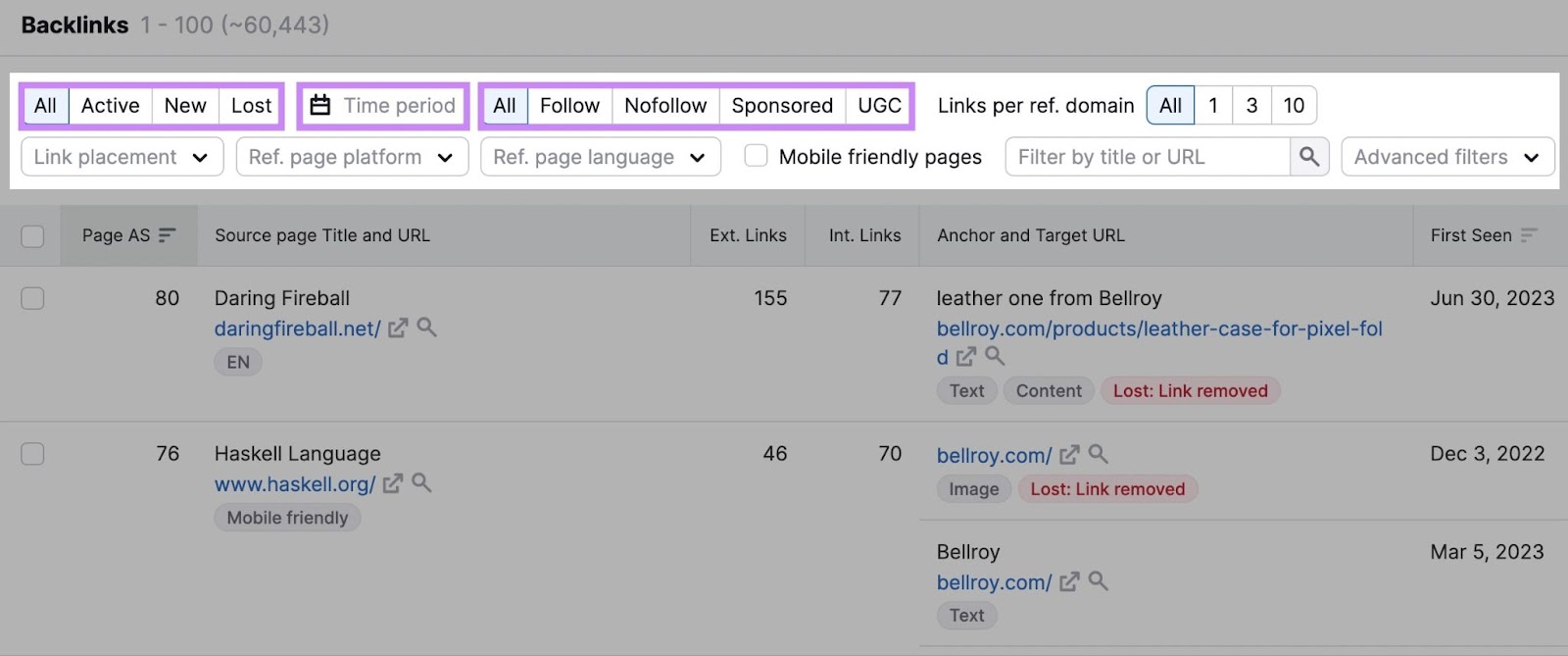
For example, if you want to check the new backlinks you acquired in the last seven days, you’ll apply filters like these:

You can further filter the report to find specifics.
For example, you might want to see:
- The links that are “follow,” which means they can pass ranking power to your site
- The links that are naturally incorporated within the content of the linking page
- The links that come from pages that are written in English
- Only one link per unique domain
So, you can apply these additional filters to only view backlinks that meet all those criteria:
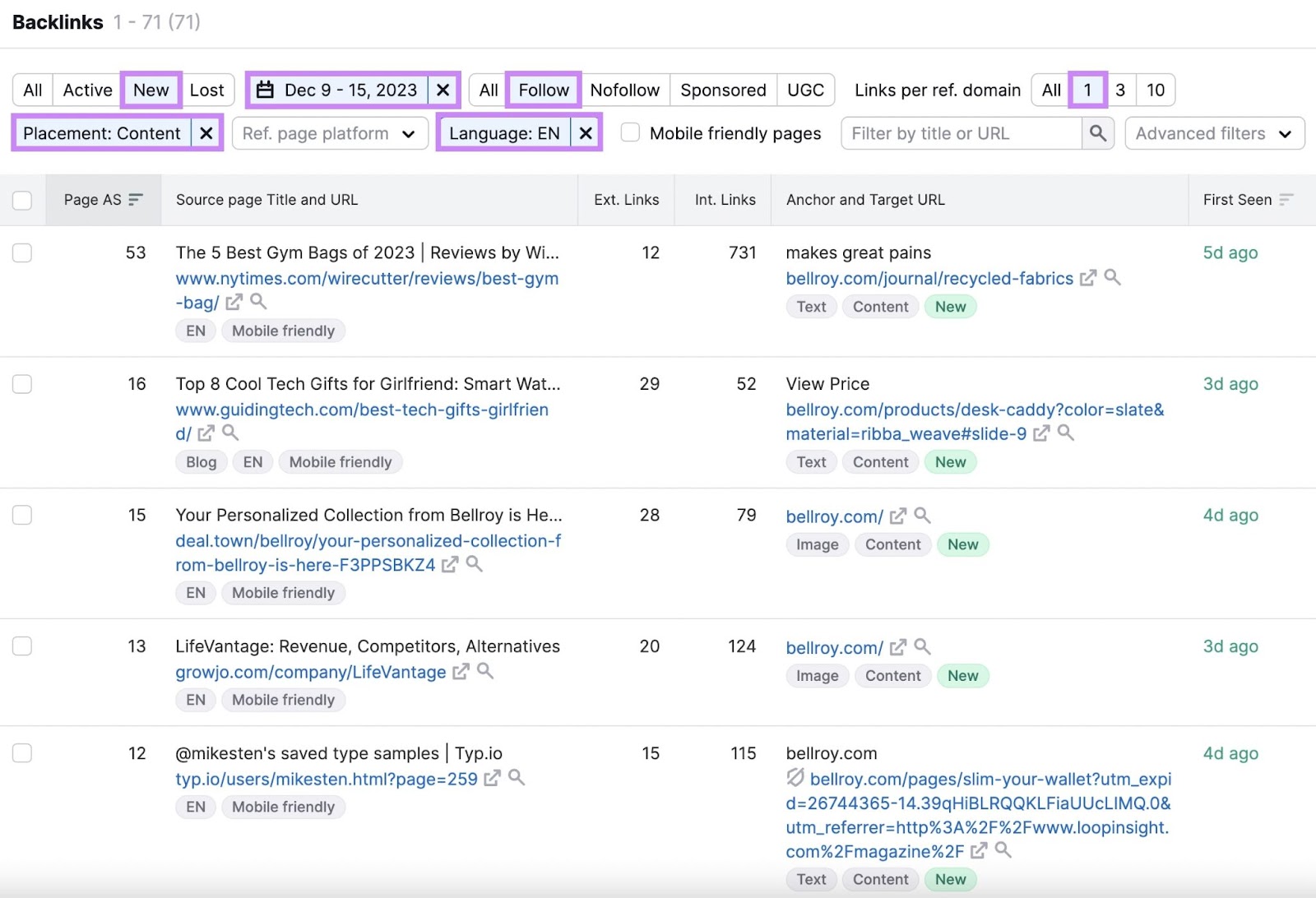
Backlink Analytics also lets you see which of your pages have the most backlinks.
Just go to the “Indexed Pages” tab. And you’ll see your most linked-to content.
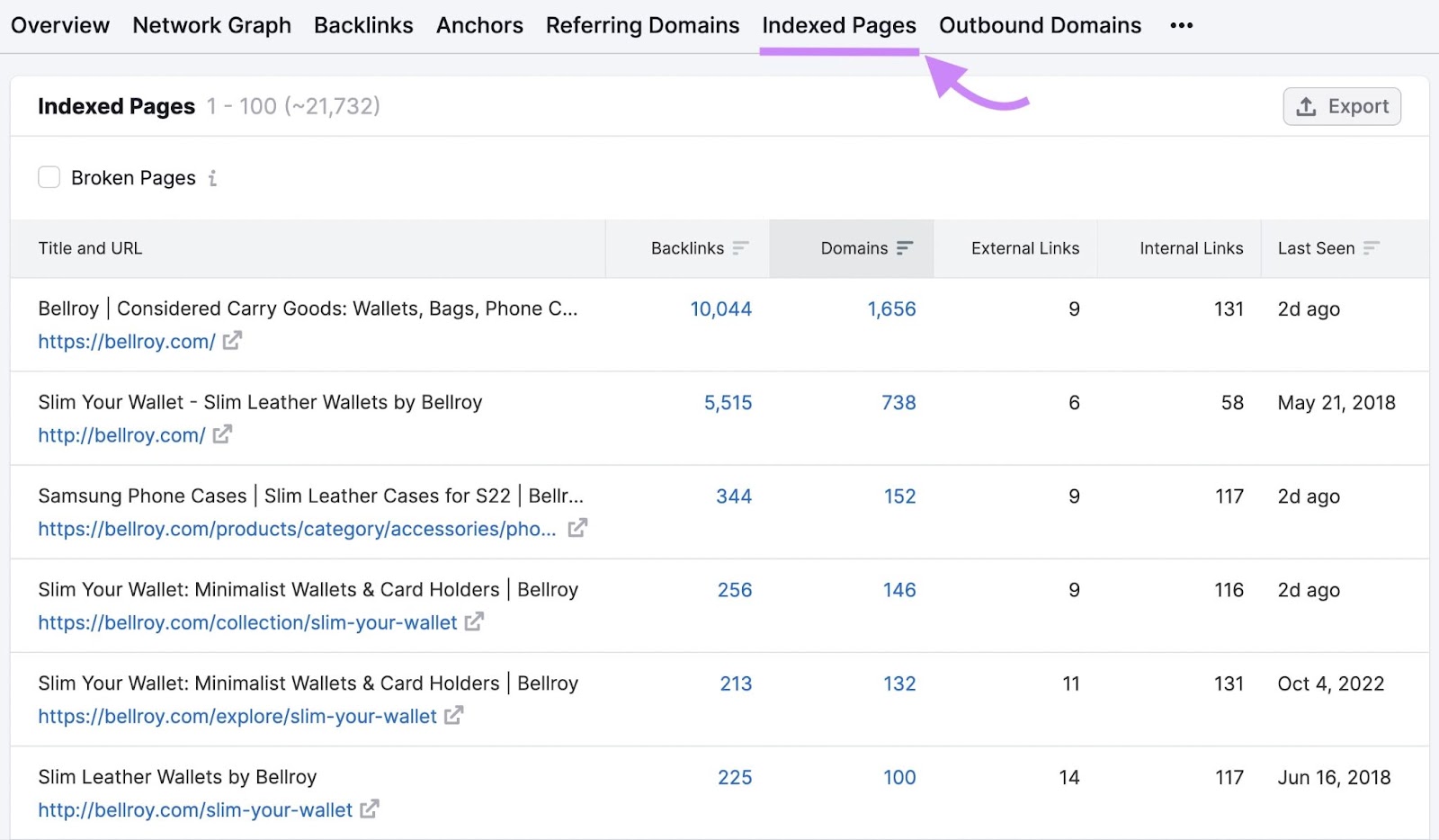
Analyzing these pages helps you understand what kind of content attracts the most backlinks in your niche. And how you can create similar or better content to get more links in the future.
Backlink Analytics not only gives you data, but also helps you interpret and use that data to improve your link building strategy.
Leverage a Backlink Gap Tool
The Backlink Analytics tool lets you explore and analyze the links of any website in detail. But if you want to know how to check backlinks that your competitors have but you don’t, you should use the Backlink Gap Tool.
To get started:
- Open the tool
- Enter your domain name
- Enter up to four competitors
- Click “Find prospects”
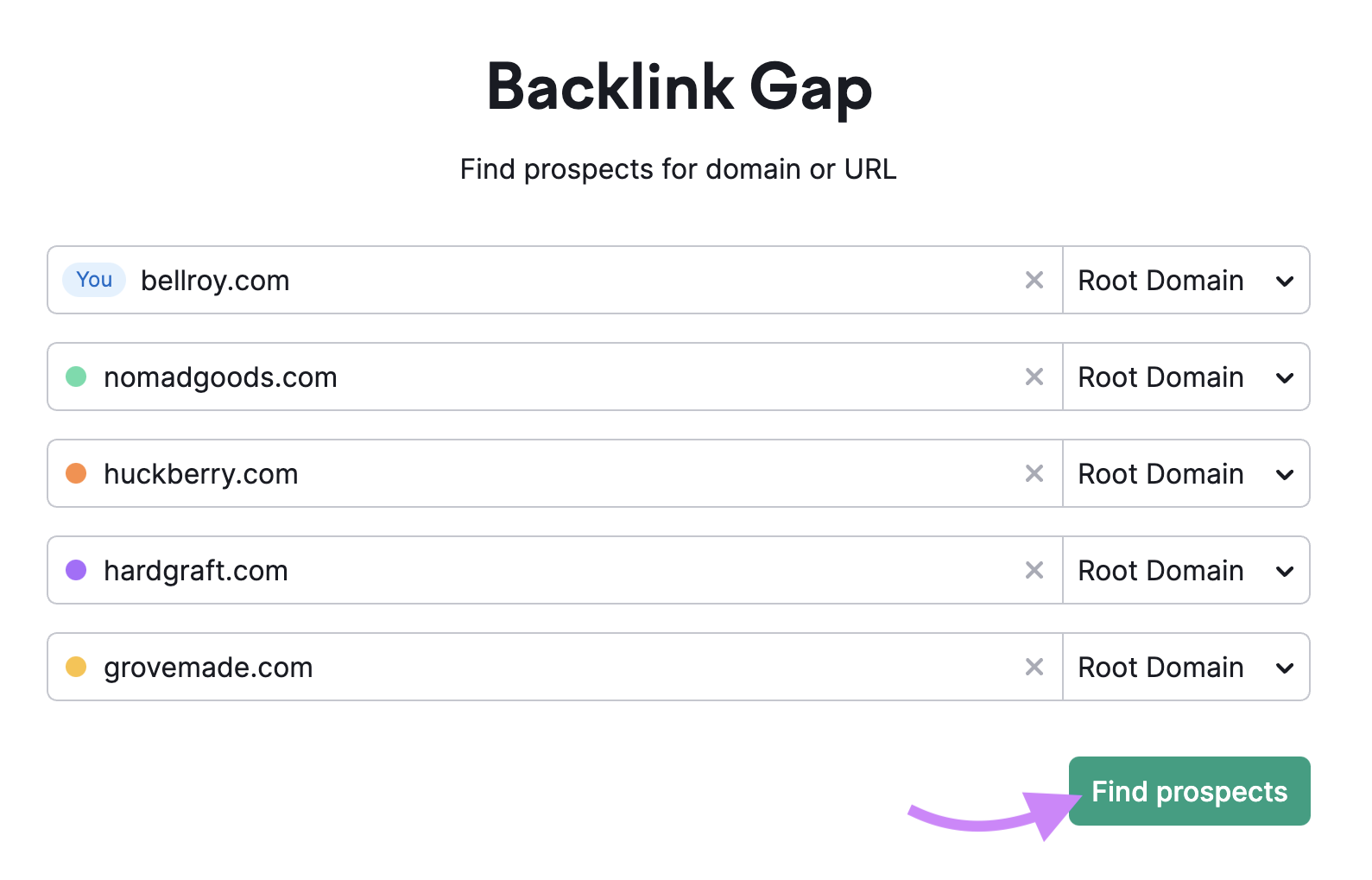
The tool analyzes all the entered sites and shows you referring domains linking only to your competitors.
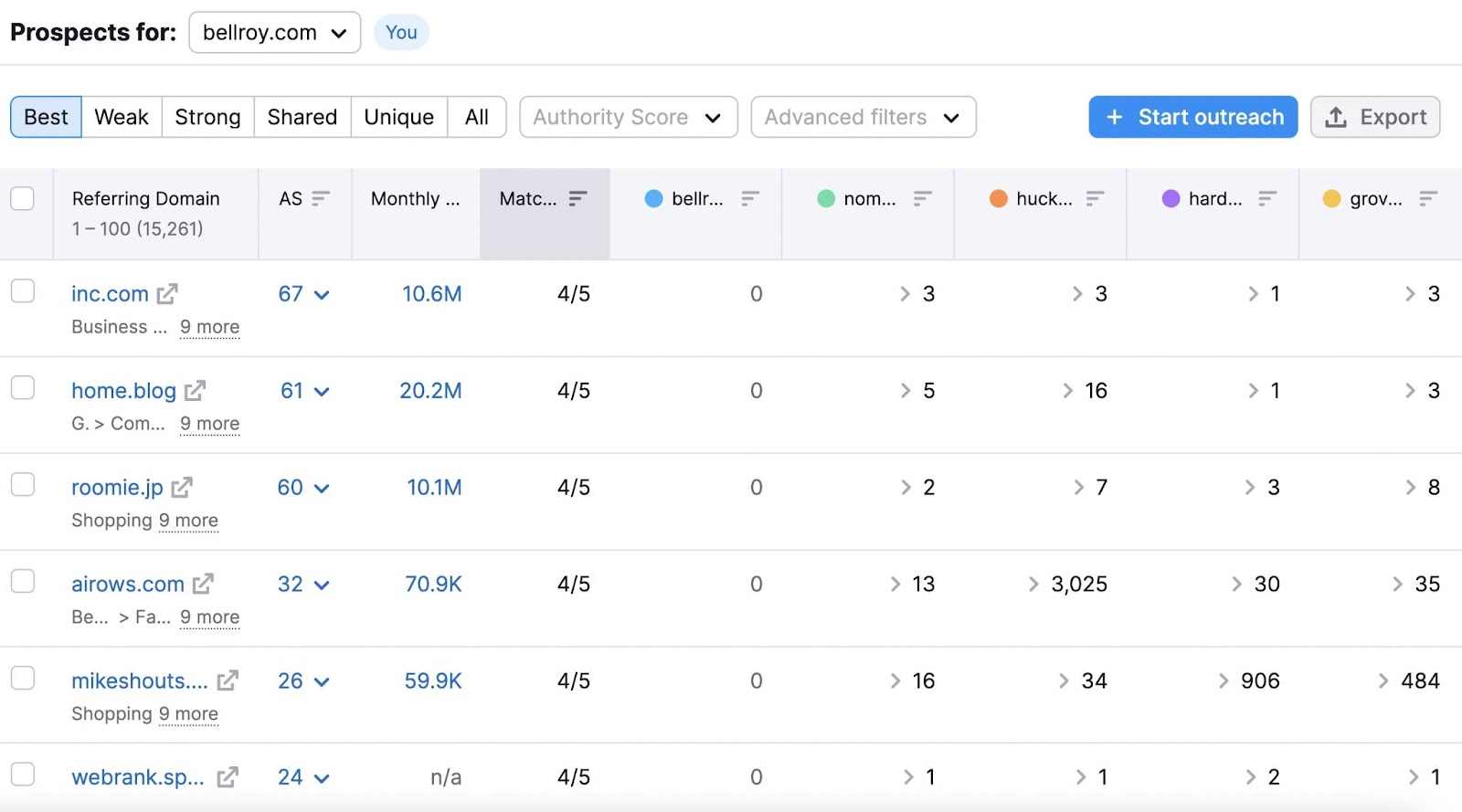
These are links you’re missing out on.
From here, if you want to spot the most authoritative, popular, and relevant prospects, look for these indicators:
- Authority Score: Higher than 50
- Monthly Visits: Higher than 10,000
- Matches: 4/5
Now you know the biggest backlink opportunities you should be reaching out to.
The tool also lets you filter domains by different categories, such as:
- Best: These are the sites that link to all of your competitors but not to you. This is the default view and the most important one for finding link opportunities.
- Weak: These are the sites that link to you less frequently than to your competitors. You can use this tab to find sites you should get more links from.
- Strong: These are the sites that link only to you and not to your competitors. You can use this tab to see your unique link advantages.
- Shared: These are the sites that link to both you and your competitors. You can use this category to see how you compare with your competitors in terms of link quantity and quality from these sites.
- Unique: These are the sites that link to only one specific domain, either yours or one of your competitors. You can use this tab to see your competitors’ exclusive link sources. And try to replicate them.
How to Audit the Backlink Profile of Any Website
While checking backlinks, you can also perform a quick audit to evaluate the overall quality of a site’s link profile.
Here are some things to look for when doing a backlink audit:
- Total number of backlinks: More links generally help, but remember that quality matters more than quantity. So, links from relevant, trusted websites are the most valuable.
- Number of referring domains: A higher number of referring domains indicates a more diverse and natural link profile
- Authority scores of referring domains: Links from reputable, high-authority sites in your industry are best, and a high score is a good indication of a site that meets this criteria
- Anchor text diversity: Varied, natural-looking anchor text is ideal versus over-optimized, keyword-loaded links
- Link velocity (the rate at which a site gains links): Steady, natural growth over time is positive compared to an unnatural spike in links
- “Follow” vs. nofollow links: “Follow” links can pass link equity. Nofollow links don’t but can still send some benefits your way if they’re from popular websites.
- Link location: Links higher up in content are typically seen as more valuable
- Toxicity score (a metric indicating the risk level of low-quality links): Links from low-quality, spammy sites can harm your site’s SEO if you have too many
Evaluating these factors will give you a sense of the overall quality and SEO value of your site’s link profile.
You can also use Semrush’s Backlink Audit tool to get some of these insights.
Set up a project in Backlink Audit and start the audit. Once it’s done, you’ll see a report with the following details:
The overall Toxicity Score (based on the proportion of potentially toxic backlinks the site has):
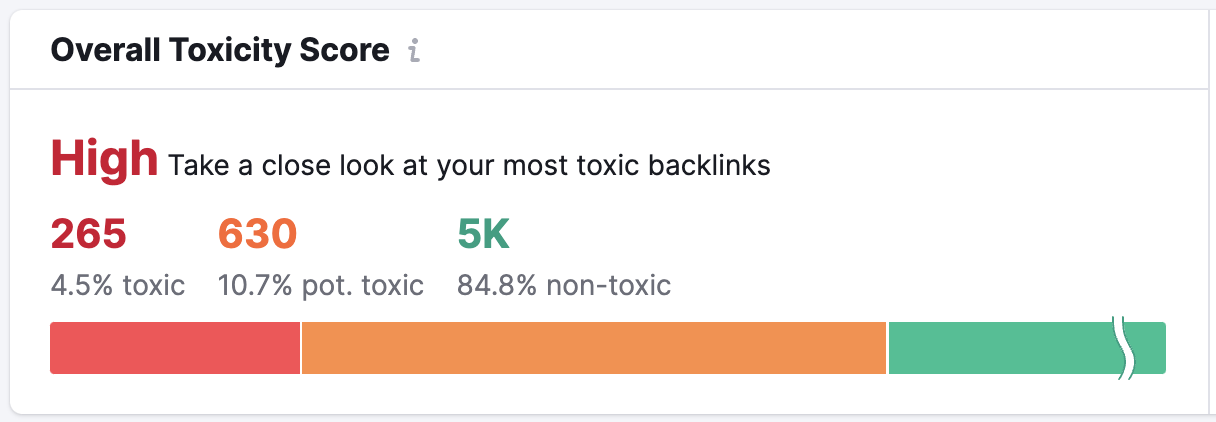
The total number of referring domains, backlinks, and Authority Score:
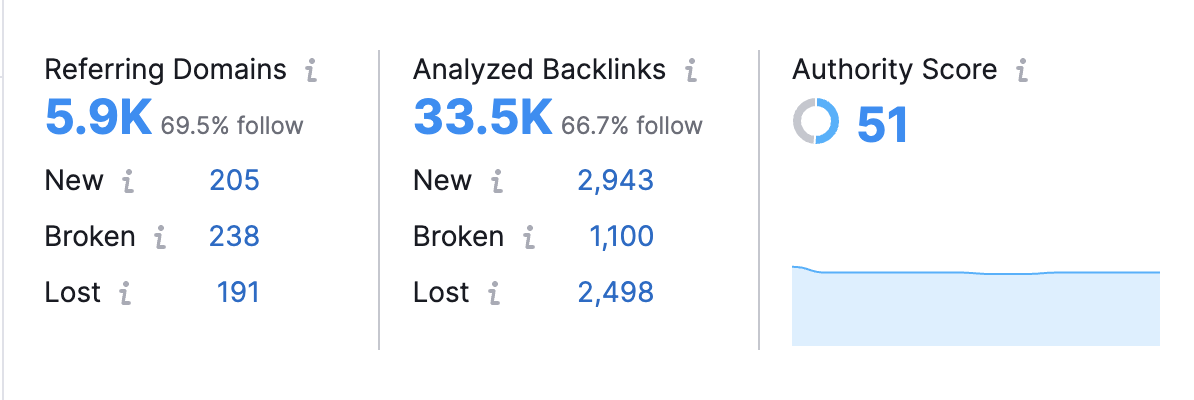
The most-used anchor text for linking:
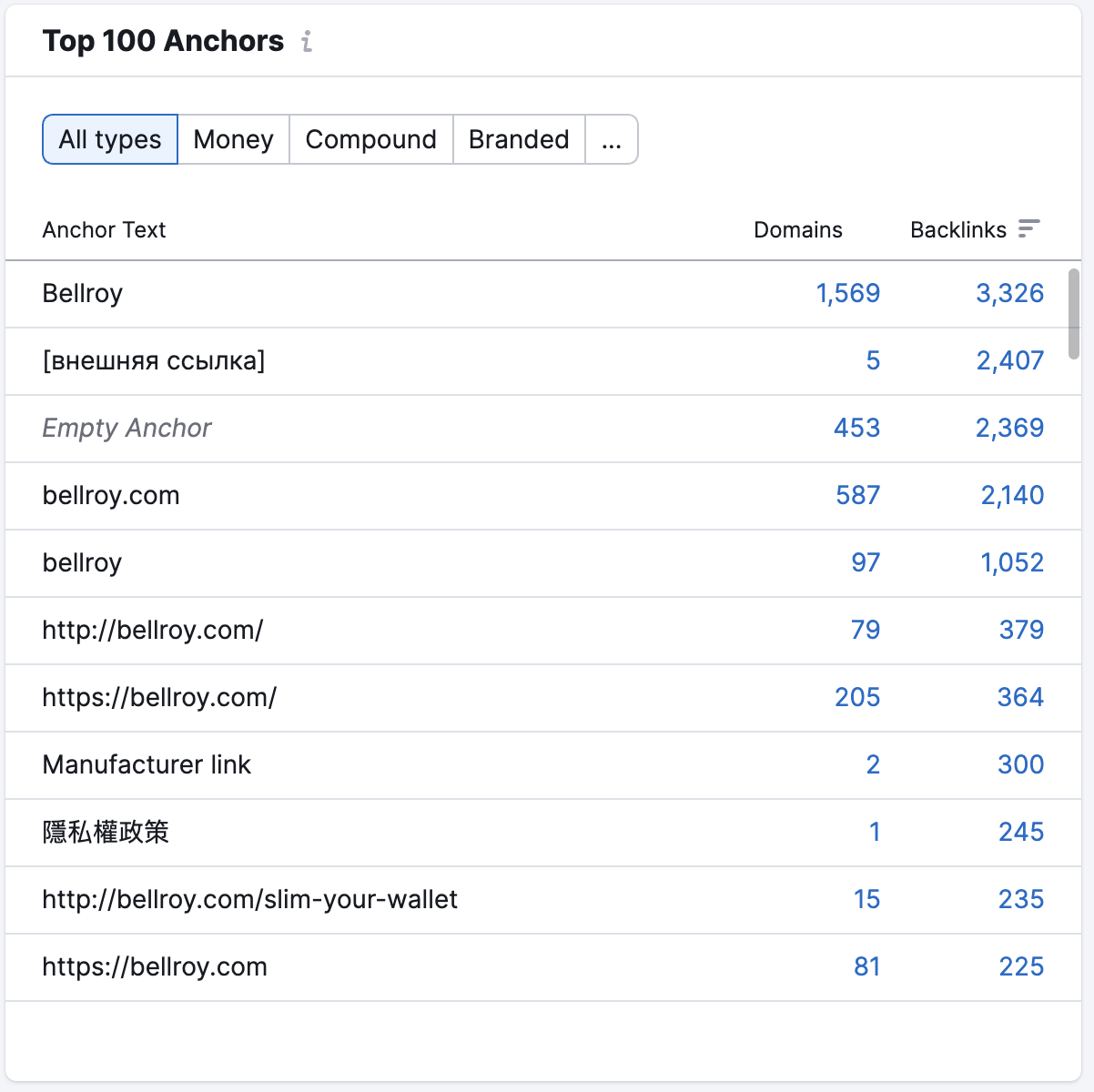
And what percentage of links are “follow” versus nofollow:
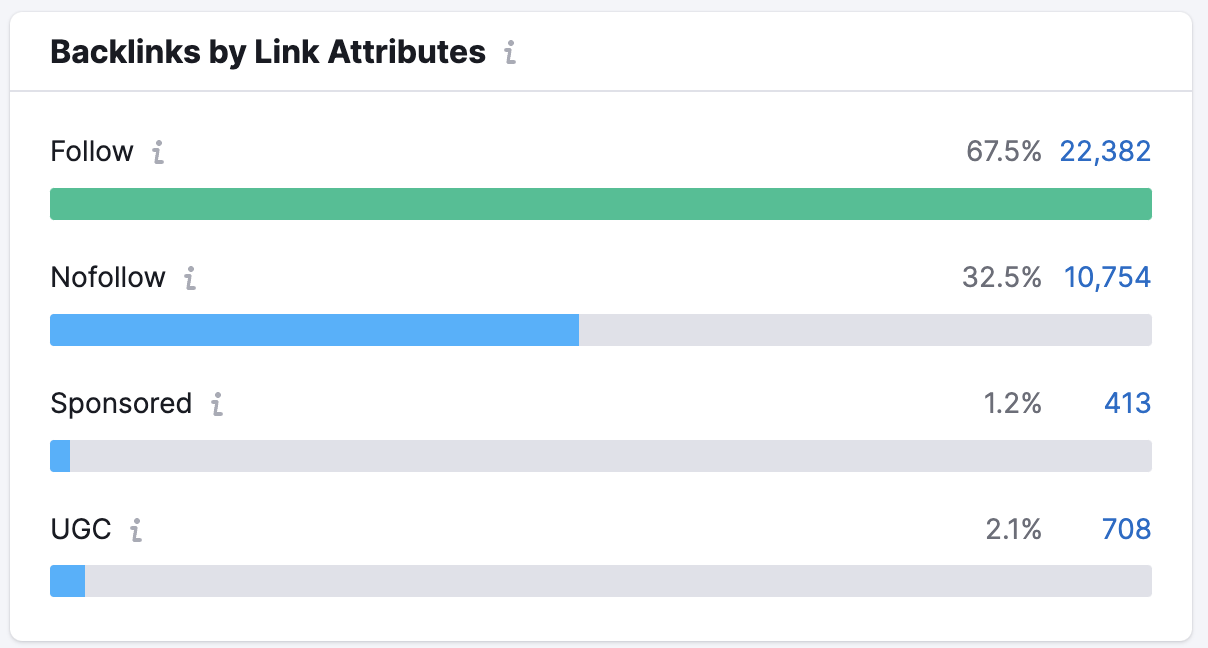
Build Backlinks to Your Site (at Scale)
If you regularly find backlinks and audit them, it ensures that you’ll maintain a healthy and high-quality link profile.
But your job doesn’t end there. You’ll need to keep building new links to remain competitive in your market.
A good way to scale your link building efforts is by using Semrush’s Link Building Tool.
This tool allows you to find new link building opportunities, manage outreach, and monitor your progress. All in one place.
To begin, create a project in the Link Building Tool.
Then, go to the “Prospects” section, where you’ll find a list of websites that could potentially link to you.
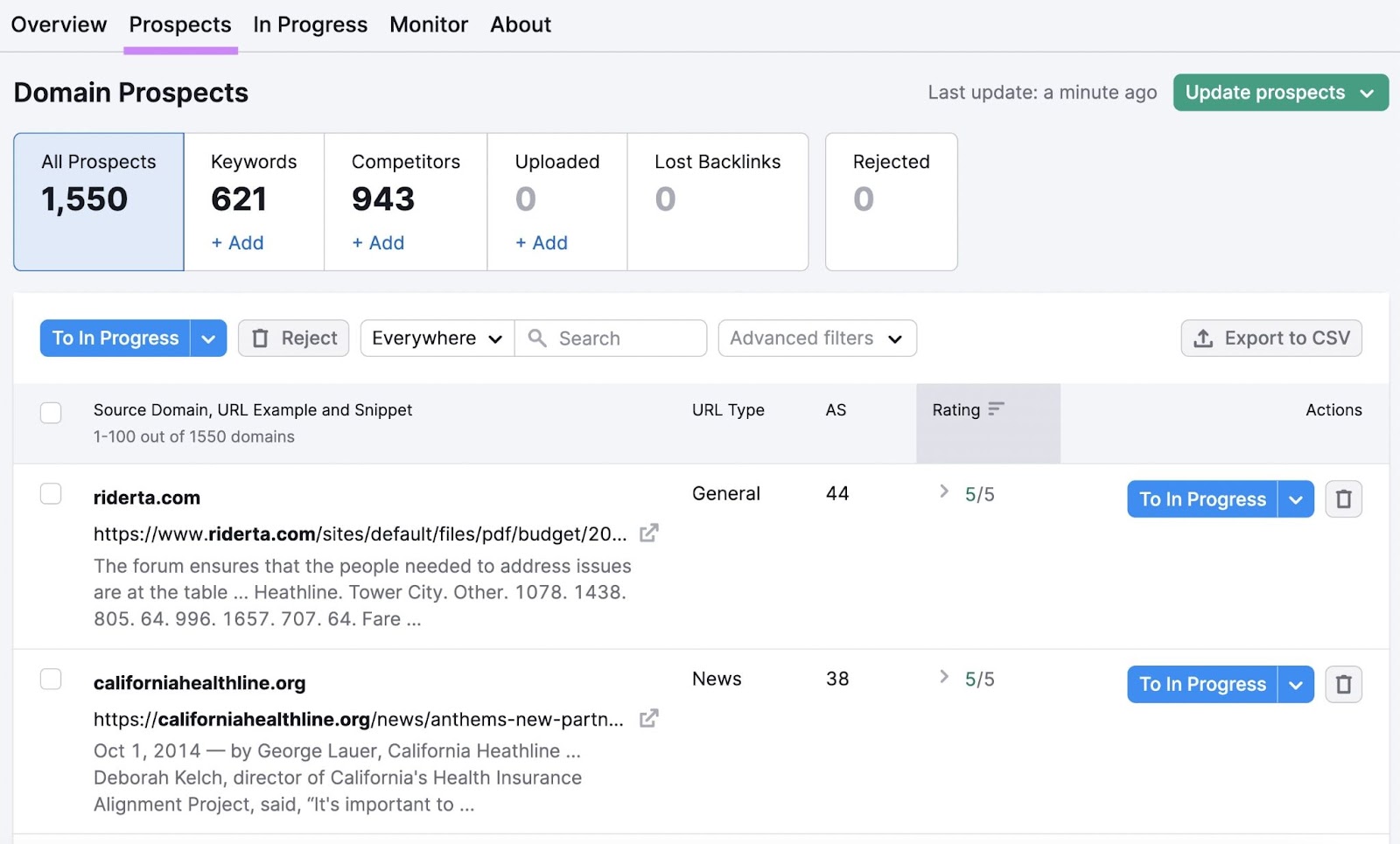
Carefully review each site and select the ones you want to contact by clicking “To In Progress” to move them to the next stage.
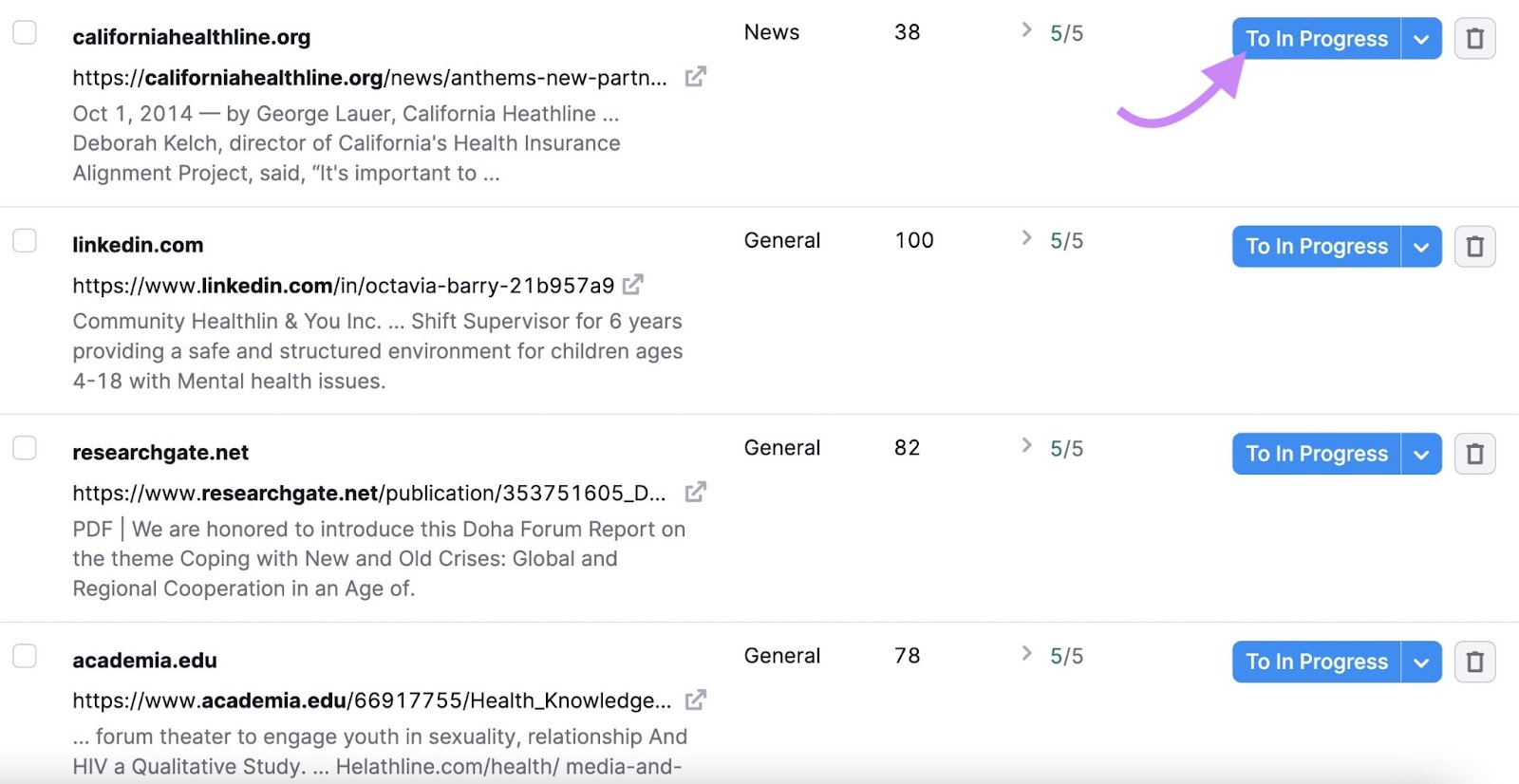
Go to the “In Progress” tab and choose a site to contact by clicking the “Contact” button next to their name.
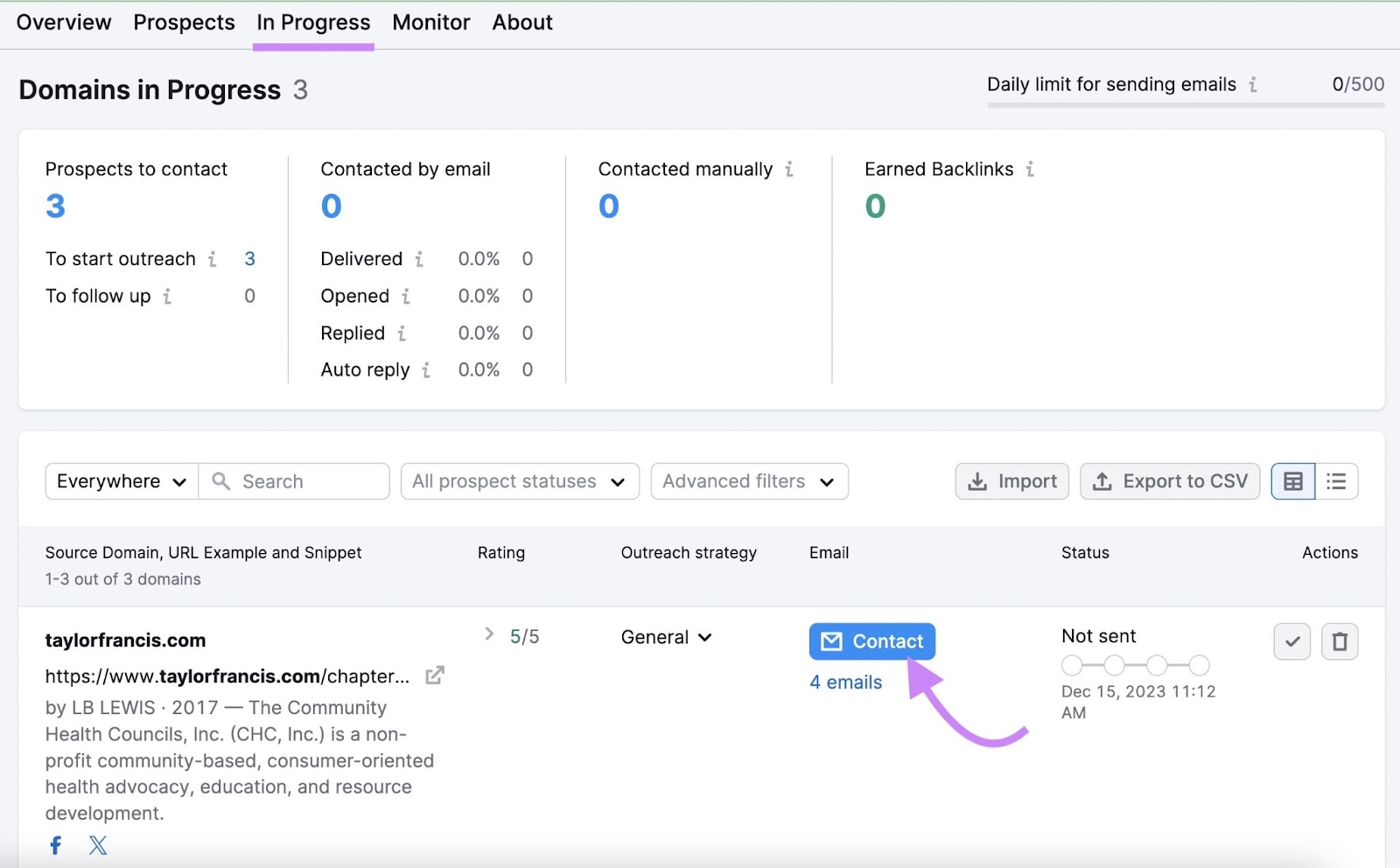
Now, you can write and send an outreach email to them.
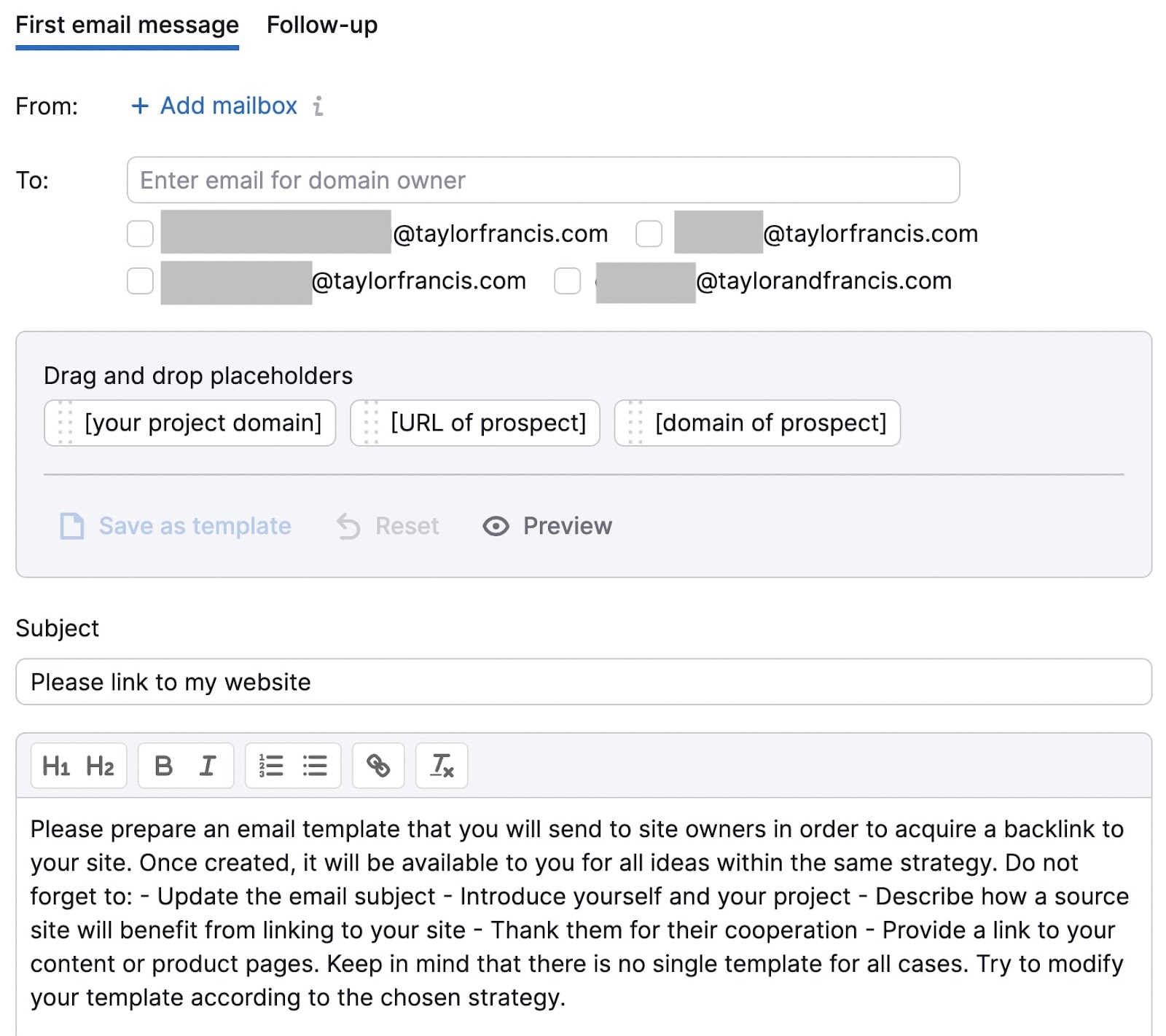
Be sure to follow proven outreach best practices like using personalization and providing value to the website owner.
Crafting personalized, value-driven pitches is key for link building success. And this tool enables you to do that at scale.
Source link : Semrush.com
